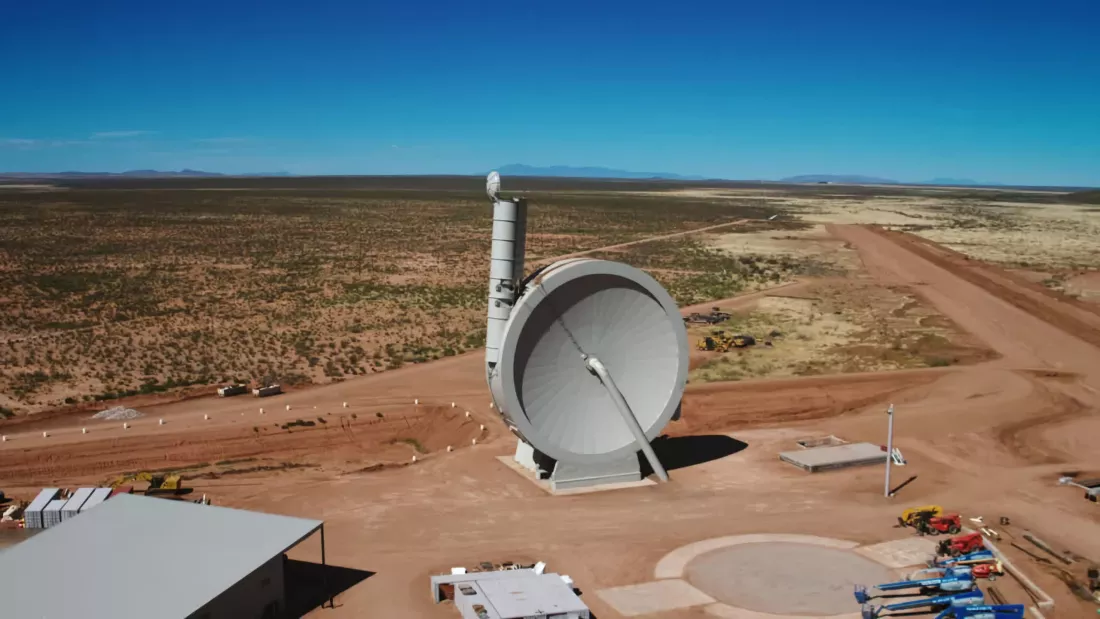According to techspot, putting satellites into orbit is very expensive. Each launch consumes a lot of fuel, and the mission can only be carried out every few months Spinlaunch, a company, hopes to eventually launch multiple satellites a day, mainly using the kinetic energy generated by a huge centrifuge
Last year, a space startup called spinlaunch completed the work of a prototype centrifuge in New Mexico, which can quickly rotate an object and launch it into the air. The company's stated goal is to eventually build a huge kinetic energy gun that can launch satellites into space.
Spinlaunch has conducted eight test flights since October. It is equipped with a camera for the latest flight, providing the first view from the prototype model into tens of thousands of meters.

Like football or bullets, the most effective and stable way to fly in the air is to use spirals. The projectile of the launcher is shaped like a large bullet or a small missile three meters long. The fins on the payload are angled to produce this rotation.
The "optical payload" left the "cannon" - a-33 suborbital mass accelerator - at a speed of 1600 kilometers per hour (nearly 1000 miles per hour). The entire journey lasted 82 seconds and the projectile reached more than 7620 meters (25000 feet). Interestingly, the launch used only a small part of the power of the a-33.
The "optical payload" test made it exciting for engineers to see things from the perspective of projectiles for the first time. More importantly, this test shows that electronic devices can withstand huge G-force and launch from the barrel - which has been the concern of the company since the concept stage. Therefore, the camera also plays the role of proof of concept.

Spinlaunch's full-size L100 orbital mass accelerator will be three times larger than the a-33. It will be able to throw a 200 kg (441 lb) satellite into near orbit at a speed of 8000 km / h (5000 mph), and then the rocket engine will start to complete the flight and stabilize the satellite's orbit.
In April, NASA signed a contract with spinlaunch for suborbital launch and recovery of specially developed test equipment. The test flight is scheduled for later this year. If all goes well, NASA will consider other possible tests and conduct the final orbital launch after the L100 is put into use.
Spinlaunch did not officially announce where it would build the L100, saying only that "the first orbital launch site is making a final selection at an upcoming location along the coast of the United States". However, the file name of a concept picture (above) contains "Alaska _orbital _wide". Alaska is presumed to be at least one candidate.
Construction should be completed in the next few years, as the start-up plans to start commercial launch in 2025. During this period, engineers will use the sub orbital prototype to test once or twice a month at a gradually accelerating speed and different payloads.
